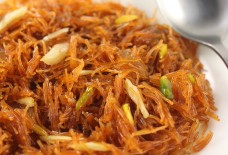Cats in Islam and the Arab World
By Lyric Ludwig / Arab America Contributing Writer
In the Arab world, the imagery, reverence, and domestication of cats is a tradition that predates Islam by many thousands of years. Imagery of cats can be found all over the extant art of the ancient Near East, from Assyrian kings hunting and subduing wild lions, to period Islamic art (miniatures and incense burners) depicting cats. Ancient Egypt is also well known as a society that both revered and adored domesticated cats. Islamic culture, in many ways adopted many of these aspects of great respect and adoration for cats, as Islamic Empires came to dominate the Near East for centuries, following the conquests of the 7th century AD.
Domestication of the first wild cats is thought to have first occurred in Mesopotamia, more than 100,000 years ago. Wild cats would kill and eat pests that would harm the agriculture of settlements, so humans naturally represented a source of food and eventually companionship as they became domesticated. Egypt was a clear example of a culture that not only came to respect cats, but hold a high degree of reverence for them as well. The export of cats to other lands was strictly forbidden, and was a matter that Egyptians took great measures to prevent. Those who killed cats were executed. Cats were even mummified, with many mummies of cats showing up in the archaeological record, showing how truly valued they were in society. The Greek historian Herodotus even mentions that the death of a cat was a greatly mourned occurence in Egypt. The Egyptian goddesses, Bast and Sekhmet, both take the forms of a cat and lioness respectively, both being gods of war and womanhood.
In Islamic culture, the cat is a revered animal as well, tales of the Prophet Muhammad’s (PBUH) fondness for cats is evidence of this. Muhammad is said to have had a favorite cat named Muezza. One such story between the two involves an instance in which the Prophet heard a call to prayer, but Muezza was resting on the sleeve of his robe. Rather than disturb his friend, he gently cut off the sleeve to attend the prayer, leaving Muezza to enjoy her nap. Indeed, Muezza and the prophet are said to have met when he was on campaign, giving the nursing Muezza water when he found her and then adopting her. Muhammad (PBUH) is also said to have emphasized the importance of cats in many hadiths. Cats are to be cherished, given ample space to roam and they even have healing benefits, with water and food that they consume being fit for human consumption as well. These beliefs emphasize that those who are kind to cats (or any creation of Allah) is a good Muslim.
The keeping of cats also seems to have been a common practice among Arabs, before, during and after Muhammad’s time. One companion of Muhammad named Abu Hurayrah (“father of kittens”) was renowned for his care of cats, carrying around a cat in a bag. This cat saved the Muhammad’s life from a snake, for which he was grateful. With all of this in mind, it is evident that a certain degree of reverence for cats is a distinct part of Islamic culture, especially compared to Judaism or Christianity. Many Sufis tell stories of cats as well, such as one where a man’s sins are forgiven, considering his kindness to cats. Those who are cruel to cats are especially despised, being subject to damnation for killing or starving cats.
In modern times, the cat is associated with cleanliness among many Arab and non Arab Muslims. To this day, they continue to be treasured companions, accompanying Muslims in the house or Mosque. Many predominantly Muslim countries even have significant populations of wild cats. In this regard, the legacy of the Middle Eastern respect and love for cats can still be felt to this day, regardless of one’s cultural background. Understanding this obscure but enjoyable cultural fact can perhaps help bridge cultural divides, uniting all people in the love for creations of Allah.
Check out our blog here!









